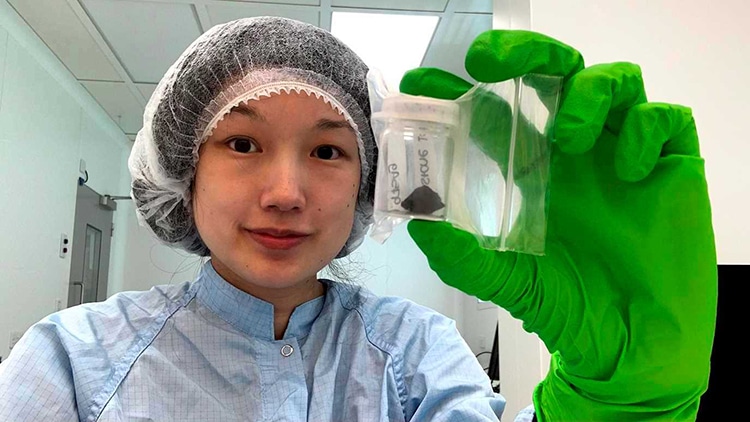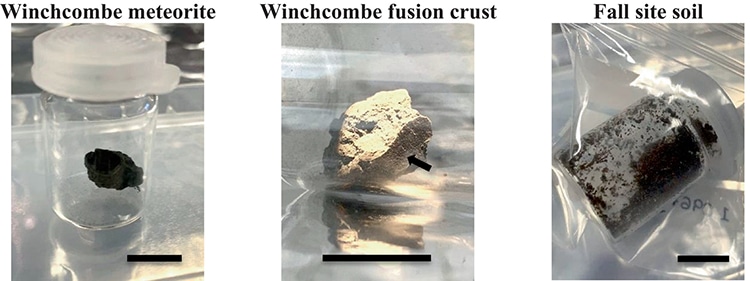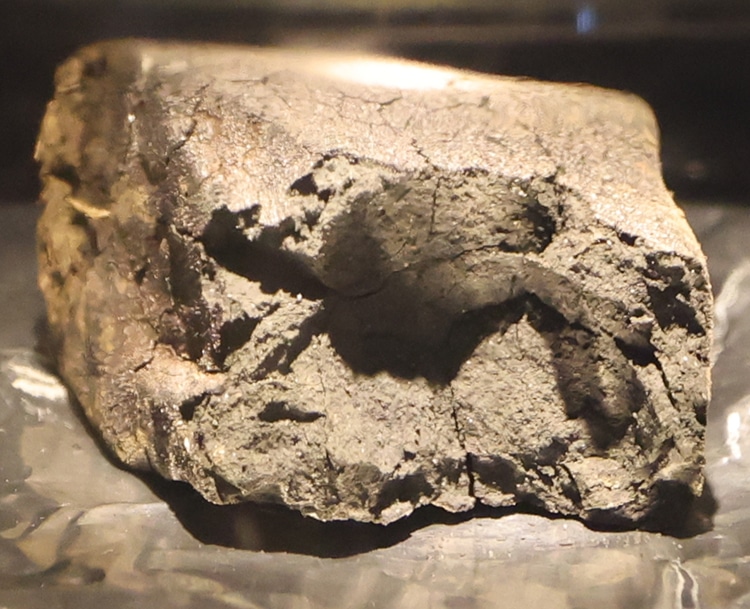Dr. Queenie Chan holds up all small piece of the Winchcombe meteorite.
Meteorites can show evidence ofminerals not seen on our planetor what looks likefossilized bacteriafrom Mars.
The Winchcombe meteorite fell into a driveway on February 28, 2021.

Dr. Queenie Chan holds up all small piece of the Winchcombe meteorite. (Photo:Royal Holloway, University of London)
The piece of rock is much smaller than most meteorites, weighing only 1.3 pounds split into four pieces.
This means the sample was relatively uncontaminated by the Earth’s environment.
The pieces quickly revealed exciting findings: the meteorite containsextra-terrestrial water, which hints at where our oceans originated.

A sample of the meteorite, its fusion crust (see arrow), and fall site soil. (Photo:Chan et al.)
The team noticed the presence of amino acids, aka the building blocks of life on Earth.
These organic compounds have been found in other meteorites, but here they appear at a lower concentration.
There is also an unusual ratio between these two materials.

A chunk of the Winchcombe meteorite, held in the Natural History Museum in London. (Photo:Wikimedia Commons,CC BY-SA 4.0)
The meteorite does not seem to have transformed completely into solid rock.
All these factors suggest to the researchers that the Winchcombe meteorite might be a kind that was previously unknown.
The structural weakness also likely is the reason so little rock survived to Earth.
A sample of the meteorite, its fusion crust (see arrow), and fall site soil.
(Photo:Chan et al.)
A chunk of the Winchcombe meteorite, held in the Natural History Museum in London.